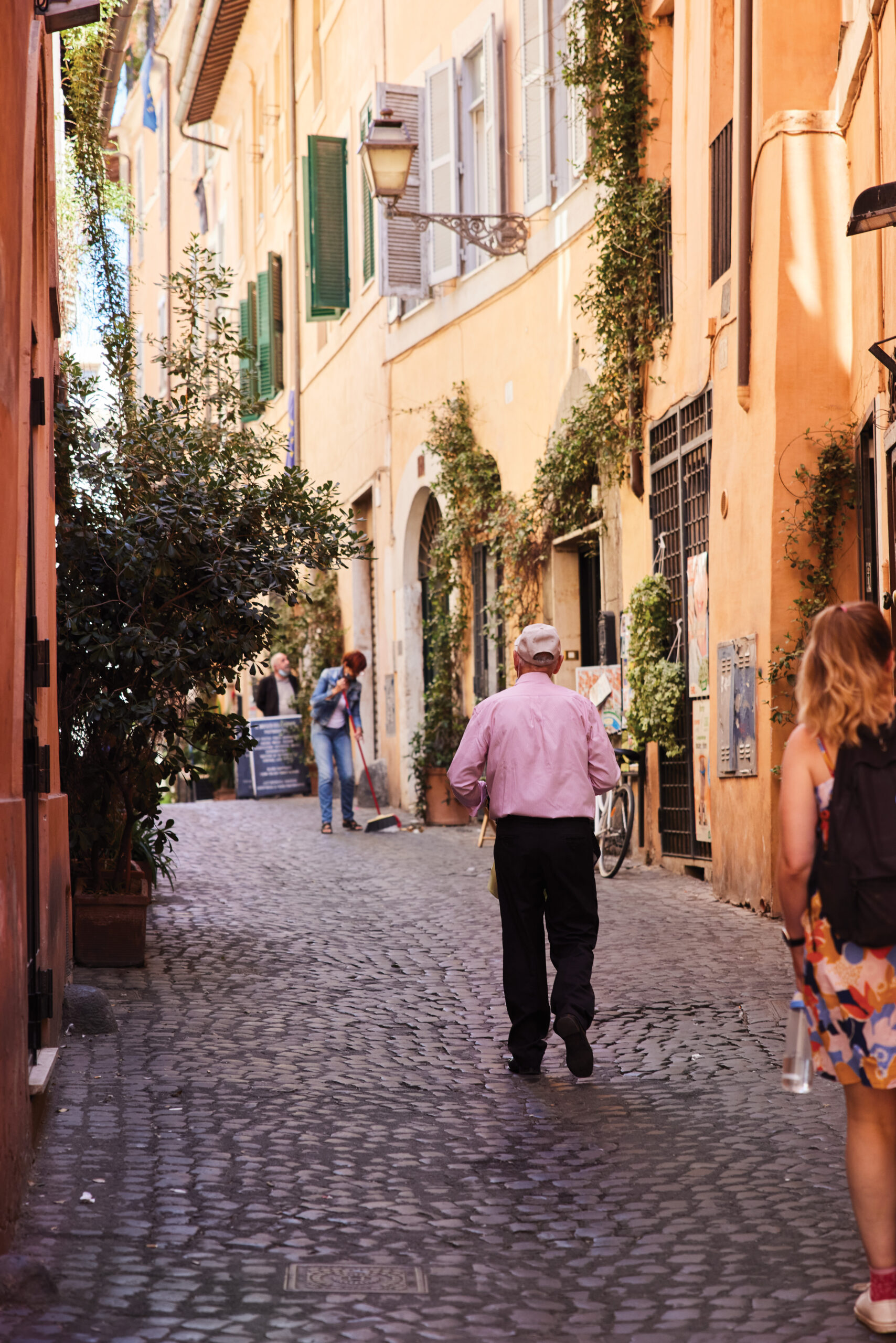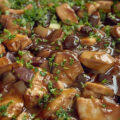If you’ve ever wanted to truly immerse yourself in a global Jewish community without leaving your kitchen, Leah Koenig’s new cookbook Portico provides you with that exact opportunity. Although filled with over 100 Roman-Jewish recipes, the real treasure of this cookbook comes with its ability to guide you on a journey through the oldest Jewish community in Europe. Alongside the cooking instructions, you’ll discover Roman Jewish customs, such as the way Romans sound the shofar on Yom Kippur, and what food is eaten in Rome for various Jewish holidays.
This cookbook is one you will genuinely want to read cover-to-cover the way you read a regular book. Rich in stories and information, food serves as a lens through which to view and understand a diverse and vibrant culture. Koenig introduces readers to Roman-Jewish food with several pages sharing the historical origin of it, and through clarifying her own discovery of the cuisine.
From the very start Koenig is transparent about her research process and walks us through the sources she used to find and tweak recipes. She writes: “I strive to share recipes that reflect the uniqueness of the places from which they originate. Yet to pretend that I do not bring my own American point of view to the kitchen would be misleading,” (page 17).
 Pizza Ebraica: Dried Fruit and Nut Bars
Pizza Ebraica: Dried Fruit and Nut Bars
I admire Koenig’s gift to weave her firsthand perspective so swiftly throughout the cookbook—often leading into recipes with her own experience with the food—and yet, acknowledging that she is not a Roman Jew and has made note throughout the book where she has made subtle tweaks to a traditional recipe.
Beyond Koenig’s transparency, she narrates the story of Roman Jewish cuisine through the people who know it best. Interviewing owners of kosher restaurants in Rome, longtime residents of the Roman Jewish Ghetto, Roman-Jewish tour guides and foodies alike, it is these people that bring the recipes in Portico to life.

Koenig clearly demonstrates a passion for connecting others with less spoken about Jewish communities via interaction. She allows readers to meet Italkim, Sephardim and Libyan Jews, the three communities that make up the Jewish community in modern day Rome, through cooking. Personally, I was thrilled to have a behind the scenes viewpoint into the process it took to develop this cookbook, as a recipe tester for Cinnamon-Almond Cookies with Chocolate (page 268). Getting the chance to make this recipe, to mold the dough with my hands, to photograph my creation and submit feedback on it to Koenig only made me feel more certain that the smells wafting through my oven brought me a step closer to the people featured in this cookbook.
If you choose to try out the recipes for yourself, it is important to note many of the recipes are complex and time-consuming. There are no numbered steps, but rather big paragraphs of instructions. Yet, if you make the recipes, you won’t regret the experience. Roman Jewish food is filled with delightful vegetables such as marinated zucchini, roasted tomatoes, and deep-fried artichokes. The cuisine exudes unique flavors and spices.
But if you decide to leave the cooking to someone else, the pictures alone serve as a travel guide to Rome. While some pages are filled with extra white space, and most pictures lack captions, overall, the exquisite photos transport you directly to Rome. If you’ve visited Rome before, the photography leaves you in a world of reminiscence; if this cookbook is your first trip, after scouring the pages of this cookbook you’ll certainly feel at home in the city as well.

In Portico, Koenig explains the way torah.it, an Italian organization dedicated to Jewish texts, helped her find an electronic copy of a rare-to-find Roman Jewish cookbook. I was surprised for a moment, reflecting on Jewish cookbooks as Jewish texts. But then it dawned on me: Portico is a reference which provides a glimpse into the Jewish story. It educates and enlightens, about history, religion, and culture. Whether reading the cookbook, or using it to prepare your next meal, this cookbook is a resource which should be a part of all Jewish homes.

Photos reprinted from Portico: Cooking and Feasting in Rome's Jewish Kitchen by Leah Koenig. Copyright © 2023 by Leah Koenig. Used with permission of the publisher, W.W. Norton & Company, Inc. All rights reserved.






 Apple Fritters
Apple Fritters










